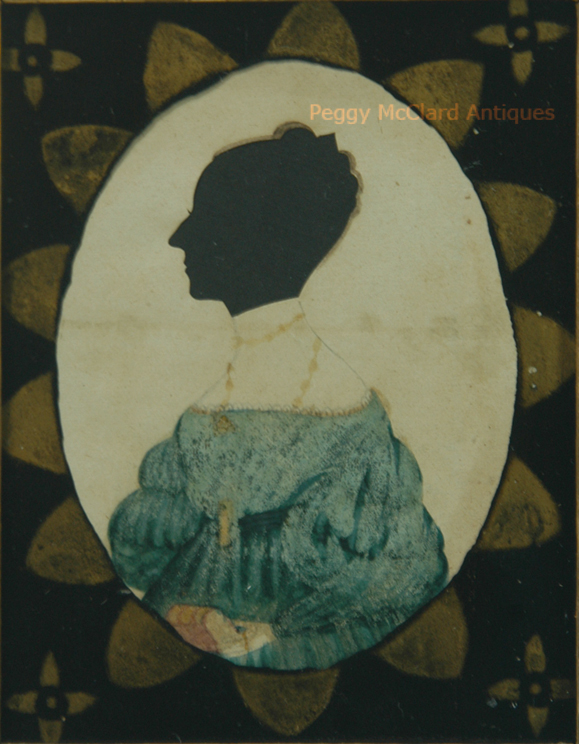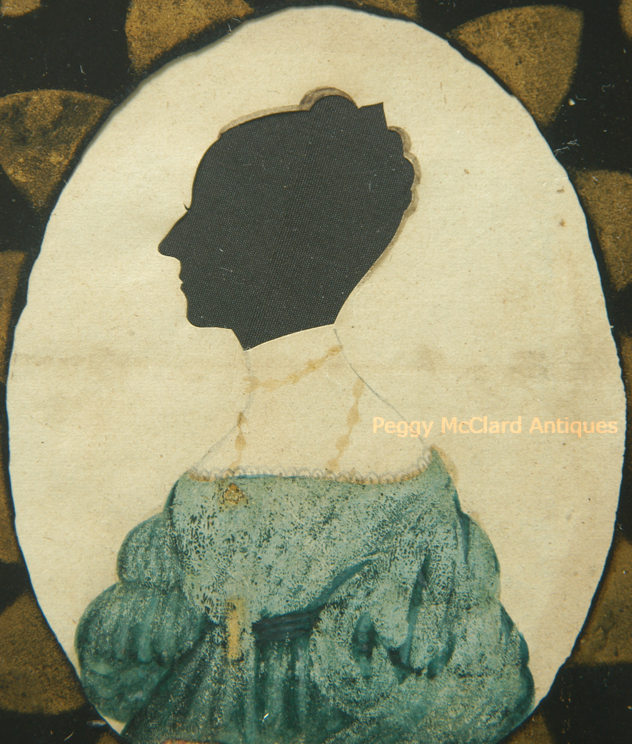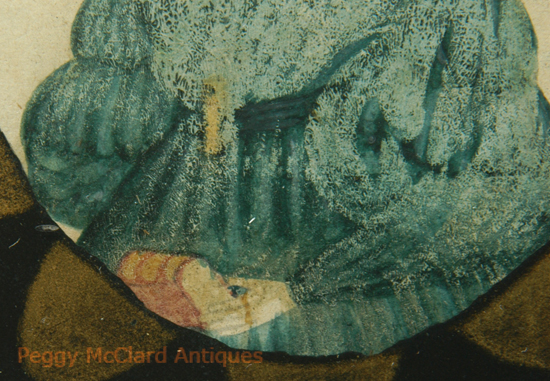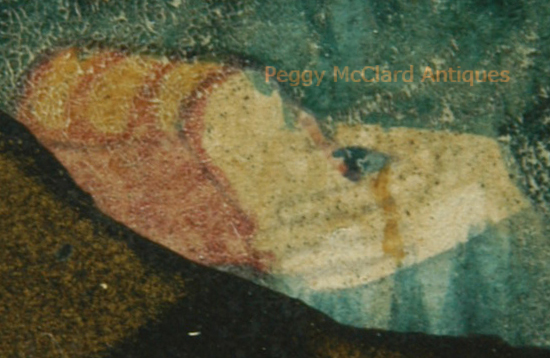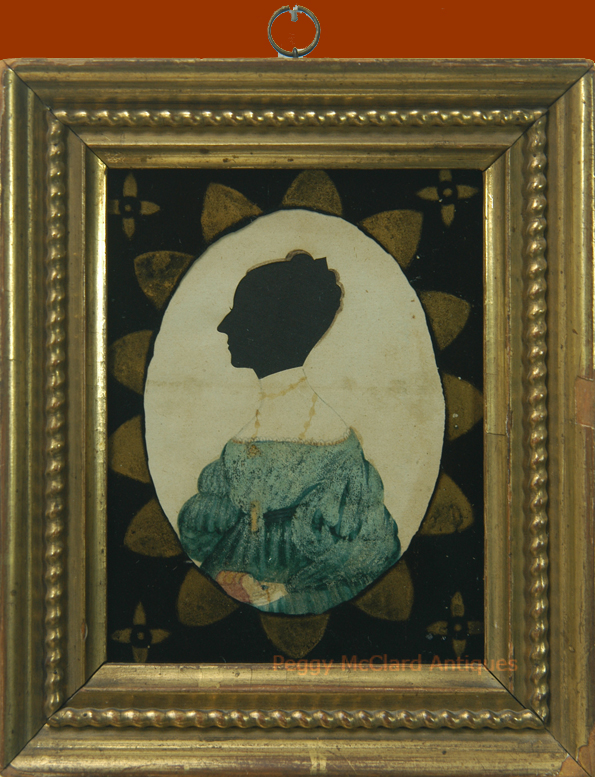
As you probably know, these American folk silhouettes with hollow cut heads and painted or printed bodies are among my favorite. This is one of those scarce, folky silhouettes that are so desirable. This young lady wears a simple knot at the top of her head, held in place by a low hair comb with curls below the comb. These low knots at the top of the head are indicative of the 1820s....moving towards the outrageously tall (and fun) Apollo knots of the 1830s, but not quite there yet. Her hair is outlined with ink or watercolor. She wears a high, straight collar, 1820s styles having lost the ruffle from the previous decade. The collar is simply outlined with pencil. Her blue dress is gathered by a belt with a gold buckle at her natural waist. Her sleeves are the "Marie" style, very full all the way down but gathered at intervals by ribbons--and padded above the elbow. She wears a long gold necklace that wraps once around her neck, then is worn long and seems to disappear inside the flat, laced neckline of the blue dress. She also wears a gold brooch at the neckline of her dress. She holds a red & gold leather-bound book in her naïvely drawn hand. She resides in what appears to be her original roped gilt frame with original églomisé verre glass mat. The condition of these classic folk silhouettes is seldom great as the itinerant silhouettists who created them used the least expensive paper they could find. Despite the fact that all paper in the early 19th century was acid-free, the less expensive paper (called "blue paper" during the period) was thinner, lesser quality, and picked up acid stains from the frame edges and backs much more quickly than better paper. That said, this lady is in very nice condition for an early folk silhouette in original condition. There are a few light stains and a horizontal crease line that show up more readily in the photos than in real life. There are yellowed stains in the lace of her dress neckline and across her fingers (at least I think the one on her fingers is a stain, but looked closely under the loupe wondering whether it depicts two gold rings. The artist used gum arabic to highlight the watercolor in the dress. The gum arabic crackled and seems to have mostly flaked away, giving the dress a "shattered" or "spotty" look. The roped frame has some dings where you can see the wood under the gesso. But these roped frames are so hard to find and so wonderfully appropriate for all folk portraits and folk silhouettes of this period. I'm in love with the silhouette! Circa 1820
(#5225) Sold
Published: Page, Melinda, "What to Collect Now: Silhouettes", Country Living Magazine, June 2014, 39-42.

